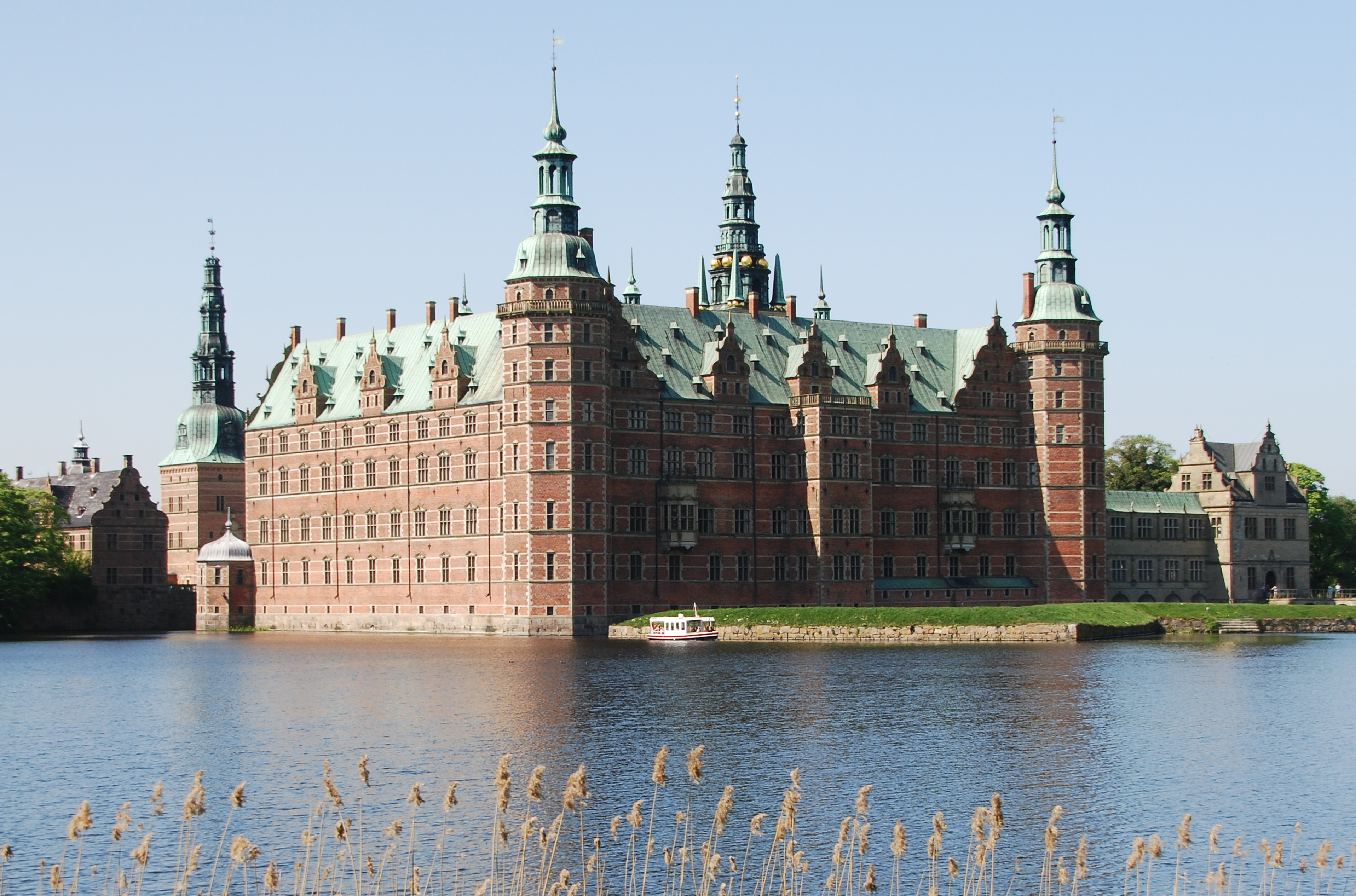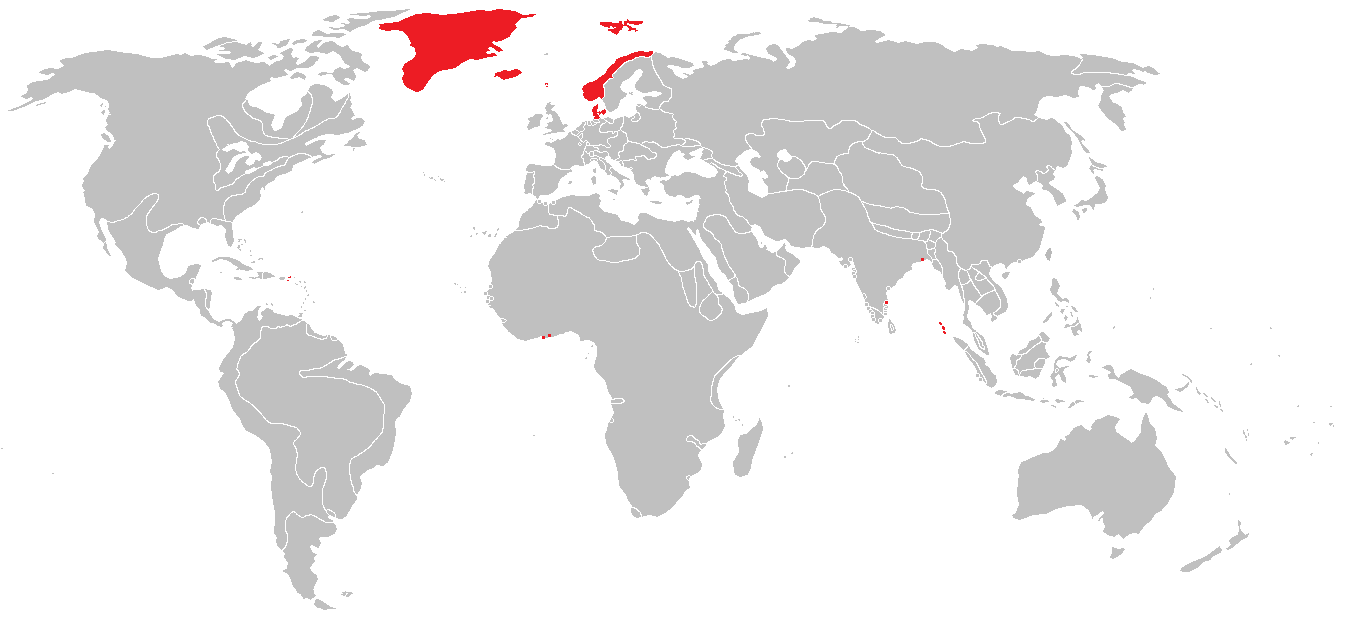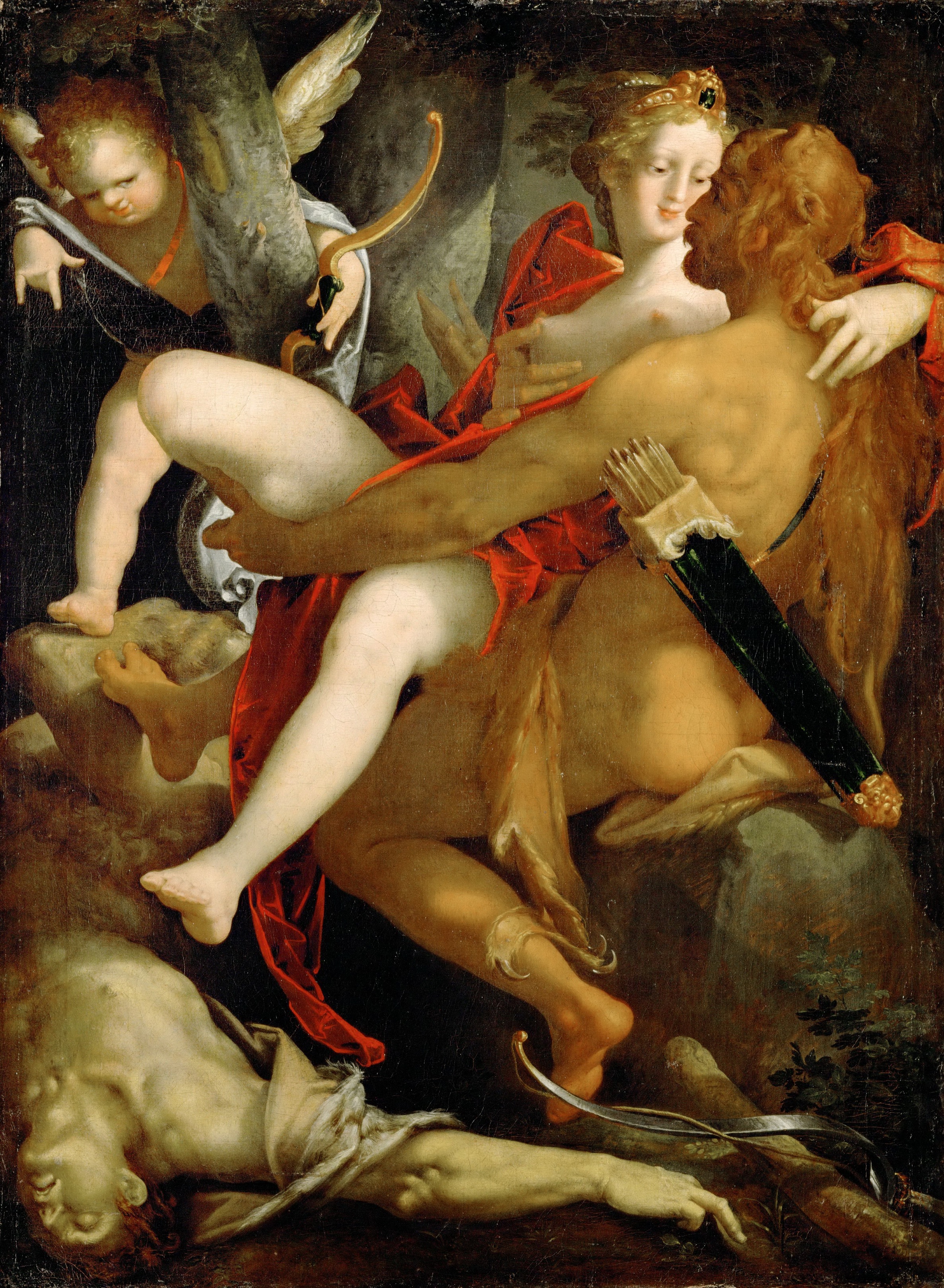|
Frederiksborg Castle
Frederiksborg Castle ( da, Frederiksborg Slot) is a palatial complex in Hillerød, Denmark. It was built as a royal residence for King Christian IV of Denmark-Norway in the early 17th century, replacing an older castle acquired by Frederick II and becoming the largest Renaissance residence in Scandinavia. On three islets in the ''Slotssøen'' (castle lake), it is adjoined by a large formal garden in the Baroque style. After a serious fire in 1859, the castle was rebuilt on the basis of old plans and paintings. Thanks to public support and the brewer J. C. Jacobsen, its apartments were fully restored and reopened to the public as the Danish Museum of National History in 1882. Open throughout the year, the museum contains the largest collection of portrait paintings in Denmark. It also provides visitors with an opportunity to visit several of the castle's state rooms including the restored Valdemar Room and Great Hall as well as the Chapel and the Audience Chamber which were bot ... [...More Info...] [...Related Items...] OR: [Wikipedia] [Google] [Baidu] |
Frederiksborg Castle And Boat Crop
Frederiksborg may refer to: * Frederiksborg Castle, in Hillerød, Denmark * Frederiksborg, former name of Hillerød, a municipality to the north of Copenhagen, Denmark * Frederiksborg County, former county on the island of Zealand in Denmark * Fort Frederiksborg, Danish and later English fort built in 1661 in contemporary Ghana * Frederiksborger, a kind of horse originating in Denmark * Frederiksborg Glacier, on the east coast of the Greenland ice sheet See also * Treaty of Frederiksborg, signed at Frederiksborg Castle in 1720 {{Disambig, geo ... [...More Info...] [...Related Items...] OR: [Wikipedia] [Google] [Baidu] |
Denmark–Norway
Denmark–Norway (Danish and Norwegian: ) was an early modern multi-national and multi-lingual real unionFeldbæk 1998:11 consisting of the Kingdom of Denmark, the Kingdom of Norway (including the then Norwegian overseas possessions: the Faroe Islands, Iceland, Greenland, and other possessions), the Duchy of Schleswig, and the Duchy of Holstein.Feldbæk 1998:21f, 125, 159ff, 281ff The state also claimed sovereignty over three historical peoples: Frisians, Gutes and Wends.Feldbæk 1998:21 Denmark–Norway had several colonies, namely the Danish Gold Coast, the Nicobar Islands, Serampore, Tharangambadi, and the Danish West Indies.Feldbæk 1998:23 The union was also known as the Dano-Norwegian Realm (''Det dansk-norske rige''), Twin Realms (''Tvillingerigerne'') or the Oldenburg Monarchy (''Oldenburg-monarkiet'') The state's inhabitants were mainly Danes, Norwegians and Germans, and also included Faroese, Icelanders and Inuit in the Norwegian overseas possessions, a Sami minori ... [...More Info...] [...Related Items...] OR: [Wikipedia] [Google] [Baidu] |
Coronations In Europe
: ''Note: this article is one of a set, describing coronations around the world.'' : ''For general information related to all coronations, please see the umbrella article Coronation.'' Coronations in Europe were previously held in the monarchies of Europe. The United Kingdom is the only monarchy in Europe that still practices coronation. Current European monarchies have either replaced coronations with simpler ceremonies to mark an accession (e.g. Denmark) or have never practiced coronations (e.g. The Netherlands and Belgium). Most monarchies today only require a simple oath to be taken in the presence of the country's legislature. By country Albania King Zog I, self-proclaimed monarch of Albania, was ritually crowned on 1 September 1928. His coronation attire included rose-colored breeches, gold spurs, and a gold crown weighing . Europe's only Muslim king swore a required constitutional oath on the Bible and the Qur'an, symbolizing his desire to unify his country. Zog was f ... [...More Info...] [...Related Items...] OR: [Wikipedia] [Google] [Baidu] |
Hedvig Eleonora Of Holstein-Gottorp
Hedwig Eleonora of Holstein-Gottorp (23 October 1636 – 24 November 1715) was Queen of Sweden from 1654 until 1660 as the wife of King Charles X Gustav. She served as regent during the minority of her son, King Charles XI, from 1660 until 1672, and during the minority of her grandson, King Charles XII, in 1697. She also represented Charles XII during his absence in the Great Northern War from 1700 until the regency of her granddaughter Ulrika Eleonora in 1713. Hedwig Eleonora was described as a dominant personality, and was regarded as the ''de facto'' first lady of the royal court for 61 years, from 1654 until her death. Biography Early life Hedwig Eleonora was born on 23 October 1636, in the Palace of Gottorp at Schleswig, to Duke Frederick III of Holstein-Gottorp and Marie Elisabeth of Saxony. She was the sixth of the couple's sixteen children. One day after her eighteenth birthday, she was married to King Charles X Gustav of Sweden on 24 October 1654. Charles Gustav was th ... [...More Info...] [...Related Items...] OR: [Wikipedia] [Google] [Baidu] |
Second Northern War
The Second Northern War (1655–60), (also First or Little Northern War) was fought between Sweden and its adversaries the Polish–Lithuanian Commonwealth (1655–60), the Tsardom of Russia (Russo-Swedish War (1656–1658), 1656–58), Brandenburg-Prussia (1657–60), the Habsburg monarchy (1657–60) and Denmark–Norway (Dano-Swedish War (1657–58), 1657–58 and Dano-Swedish War (1658–60), 1658–60). The Dutch Republic waged an informal trade war against Sweden and seized the colony of New Sweden in 1655, but was not a recognized part of the Polish–Danish alliance. In 1655, Charles X Gustav of Sweden invaded and occupied western Poland–Lithuania, the eastern half of which was Russo-Polish War (1654–67), already occupied by Russia. The rapid Swedish advance became known in Poland as the Deluge (history), Swedish Deluge. The Grand Duchy of Lithuania Union of Kėdainiai, became a Swedish fief, the Polish–Lithuanian regular armies surrendered and the Polish king Joh ... [...More Info...] [...Related Items...] OR: [Wikipedia] [Google] [Baidu] |
Lorenz Van Steenwinckel
Lorenz van Steenwinckel (1585–1619) was a Flemish-Danish architect and sculptor, son of Hans van Steenwinckel the Elder and brother of Hans van Steenwinckel the Younger. From 1613, he was responsible for numerous projects commissioned by Christian IV. Christian IV's Chapel at Roskilde Cathedral and the Stock Exchange A stock exchange, securities exchange, or bourse is an exchange where stockbrokers and traders can buy and sell securities, such as shares of stock, bonds and other financial instruments. Stock exchanges may also provide facilities for th ... in Copenhagen were among his many projects underway when he died in 1619, only 34 years old. The projects were completed by his brother Hans van Steenwinckel. References {{DEFAULTSORT:Steenwinckel, Lorenz Van 17th-century Danish architects Renaissance architects Architects of the Spanish Netherlands 1585 births 1619 deaths Danish people of Belgian descent ... [...More Info...] [...Related Items...] OR: [Wikipedia] [Google] [Baidu] |
Hans Van Steenwinckel The Younger
Hans van Steenwinckel the Younger (24 June 1587 – 6 August 1639) was a Flemish-Danish architect who specialised in the Dutch Renaissance style, typical of prestigious Danish buildings from the first half of the 17th century. Along with his brother Lorenz van Steenwinckel he was responsible for most of King Christian IV's many ambitious building projects. He was the son of Hans van Steenwinckel the Elder and the father of Hans van Steenwinckel the Youngest and probably also the building master and engineer Oluf van Steenwinckel. Career Hans and Lorenz van Steenwinckel were sons of the prime contractor and stonecutter Hans van Steenwinckel the Elder who was originally from Antwerp but had come to Denmark in 1576 to work on Kronborg Castle and subsequently became the preferred architect of Frederick II. It was natural that he followed in his father's footsteps and together with his brother Lorenz he went to the Netherlands to study architecture and stone carving. Back in Den ... [...More Info...] [...Related Items...] OR: [Wikipedia] [Google] [Baidu] |
Hans Van Steenwinckel The Elder
Hans van Steenwinckel the Elder (c. 1550 – 10 May 1601) was a Flemish-Danish architect and sculptor. He worked on a large number of the most important Danish buildings of his time, although the exact scope of his contributions in many cases remains uncertain and much have been demolished or redesigned later. The father of Hans van Steenwinckel the Younger and Lorenz van Steenwinckel, he also founded a dynasty of architects and sculptors in Denmark. Biography Hans van Steenwinckel was born in Antwerp c. 1550. The family fled to Emden, East Frisia, where his father, Lourens van Steenwinckel, became master builder. later city architect, and designed the Town Hall from 1567 onwards, later destroyed during World War II. Hans van Steenwinckel trained under his father, and it is known that he received payment for a design for the Town Hall's stairs and tower in 1574. In 1578 he travelled to Denmark, most likely as one of the master bricklayers which his countryman Anthonis van Obberg ... [...More Info...] [...Related Items...] OR: [Wikipedia] [Google] [Baidu] |
Northern Mannerism
Northern Mannerism is the form of Mannerism found in the visual arts north of the Alps in the 16th and early 17th centuries. Styles largely derived from Italian Mannerism were found in the Netherlands and elsewhere from around the mid-century, especially Mannerist ornament in architecture; this article concentrates on those times and places where Northern Mannerism generated its most original and distinctive work. The three main centres of the style were in France, especially in the period 1530–1550, in Prague from 1576, and in the Netherlands from the 1580s—the first two phases very much led by royal patronage. In the last 15 years of the century, the style, by then becoming outdated in Italy, was widespread across northern Europe, spread in large part through prints. In painting, it tended to recede rapidly in the new century, under the new influence of Caravaggio and the early Baroque, but in architecture and the decorative arts, its influence was more sustained. Backgro ... [...More Info...] [...Related Items...] OR: [Wikipedia] [Google] [Baidu] |
Kristian IV Av Danmark, Malning Av Pieter Isaacsz 1611-1616
Kristian is a name in several languages, and is a form of Christian. Meaning in different languages The name is used in several languages, among them Albanian, Slovak, Danish, Finnish, Norwegian, Swedish, Bosnian, Macedonian, Bulgarian and Croatian. In some languages people with the name are sometimes named after the cross, not after Christ. The word cross in Bulgarian, Macedonian, Serbian is ''kr'st'' and in Russian is ''krest'', in some cases pronounced ''krist''. In contrast Christ in these Slavic languages is called ''Hristos'', which confuses to which of both nouns the name sounds more similar. The name may have a third meaning in Bulgarian and Macedonian, in which the word ''kr'sten'' means baptized and has the same as the word for cross. Though sounding similar, the words cross and Christian have different roots, ''Christian'' derives from the Koine Greek word ''Christós'', possibly ultimately derived from the Egyptian ''kheru'', "word" or "voice", used to replace ... [...More Info...] [...Related Items...] OR: [Wikipedia] [Google] [Baidu] |
Danish Rigsdaler
The rigsdaler was the name of several currencies used in Denmark until 1875. The similarly named Reichsthaler, riksdaler and rijksdaalder were used in Germany and Austria-Hungary, Sweden and the Netherlands, respectively. These currencies were often anglicized as rix-dollar or rixdollar. History Several different currency systems have been used by Denmark from the 16th to 19th centuries. The ''krone'' (lit. "crown") first emerged in 1513 as a unit of account worth 8 marks. The more generally used currency system until 1813, however, was the Danish ''rigsdaler'' worth 1 ''krone'' (or ''schlecht daler''), 6 marks, or 96 '' skilling''. The Danish ''rigsdaler'' used in the 18th century was a common system shared with the silver reichsthalers of Norway, Hamburg and Schleswig-Holstein. The currency system consisted of the Reichsthaler specie (''Rigsdaler specie'') worth 120 ''skillings'' in Denmark and Norway, and the lower-valued ''Rigsdaler courant'' worth th of specie or 96 ''skill ... [...More Info...] [...Related Items...] OR: [Wikipedia] [Google] [Baidu] |
Anne Of Denmark
Anne of Denmark (; 12 December 1574 – 2 March 1619) was the wife of King James VI and I; as such, she was Queen of Scotland The monarchy of the United Kingdom, commonly referred to as the British monarchy, is the constitutional form of government by which a hereditary sovereign reigns as the head of state of the United Kingdom, the Crown Dependencies (the Bailiw ... from their marriage on 20 August 1589 and Queen of England and Ireland from the union of the Scottish and English crowns on 24 March 1603 until her death in 1619. The second daughter of King Frederick II of Denmark and Sophie of Mecklenburg-Güstrow, Anne married James at age 14. They had three children who survived infancy: Henry Frederick, Prince of Wales, who predeceased his parents; Elizabeth Stuart, Queen of Bohemia, Princess Elizabeth, who became Queen of Bohemia; and James's future successor, Charles I of England, Charles I. Anne demonstrated an independent streak and a willingness to use fa ... [...More Info...] [...Related Items...] OR: [Wikipedia] [Google] [Baidu] |


.jpg)



